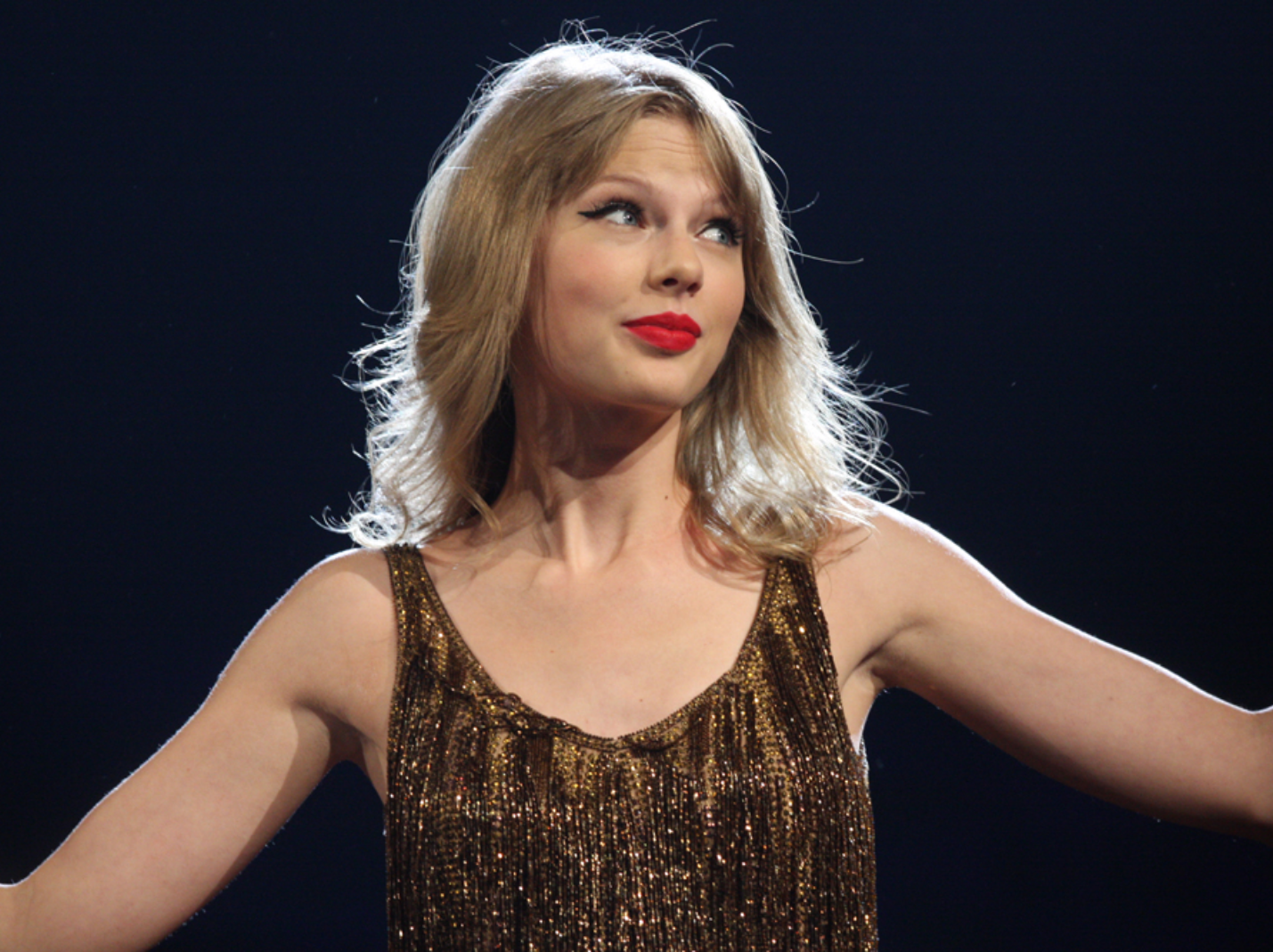
Author’s Note: This article is from my weekly “Top of Mind” email, sent to subscribers every Thursday. For more content like this and to receive the full newsletter each week, enter your name and email under “SIGN UP FOR OUR WEEKLY NEWSLETTER, ‘TOP OF MIND,’” located on the right-hand side of the site.
At the University of Tennessee (UT), advertising and public relations professor Matthew Pittman—hailed by the New York Post as “everyone’s favorite teacher”—made headlines by ending class early. Why did he do it? Taylor Swift and Travis Kelce got engaged. A viral video captured the moment—a student sprinting for the door, classmates scrambling to grab their bags, the room buzzing with barely contained excitement. Pittman later revealed it was a staged “teaching moment,” predicting that the engagement announcement would likely become the “number one shared post in the history of social media.”
@utk.socialmedia Our professor cancelled class because of the engagement! @Taylor Swift @New Heights #taylorswift #traviskelce #engagement #royalwedding #newheights ♬ original sound – UTKSM
This may be the only concrete example we have of a class being disrupted for Swifty news, but the fact that Pittman is being celebrated as a campus icon underscores how culturally resonant the stunt was. He’s not just a professor who canceled class—he’s a legend in the eyes of a generation that treats Swift like a secular deity. And for anyone wondering why students might lose their minds over a pop star’s engagement, this moment offers a clue.
Before diving in, I should expose my bias. I’ve never been a Swifty. My only soft spot is the viral YouTube edit of “Trouble,” where the soaring “oh” in the chorus cuts to a screaming goat. Beyond that, Swift’s appeal has eluded me. Her climate change lectures, for example—lectures that some students may take at face value—ring hollow as she crisscrosses the country in private jets. One infamous eight-minute hop from Cahokia, Illinois, to St. Louis comes to mind. Reports say she wasn’t on that flight, but I find that doubtful—likely, it was her legal team, known for aggressively suing anyone who portrays her negatively, behind the reports claiming she wasn’t on the plane to protect her image. (Note: the University of Pennsylvania called Swift the “climate hero we need.”)
[RELATED: The Blue Bubble Elite]
And Swift’s origin story only deepens my skepticism. The small-town country girl narrative is a myth. Her parents, a former marketing executive and a Merrill Lynch adviser—both very wealthy people—orchestrated her rise with financial savvy. They relocated the family to Tennessee, positioning her within Nashville’s orbit, with her mother chauffeuring her to drop demo CDs at record labels while her father supported the move financially. Her rise was not organic; it was a well-funded family project. And considering she isn’t even the best vocalist in the industry, her success owes more to money and marketing than to talent.
Nevertheless, despite my personal skepticism, Swift is undeniably a cultural icon—and colleges and universities have noticed.
In 2022, New York University (NYU) awarded her an honorary doctorate. Initially, one critic argued that this was a slap in the face to students who endured grueling coursework, research marathons, low pay, and crushing debt. Yet, reflecting further, the same critic shifted her opinion after noting that Swift “had never had the opportunity to don a cap and gown before her moment at NYU.” For the thousands of NYU graduates at Yankee Stadium that day, Swift’s presence symbolized something larger. Her music, the soundtrack of their adolescence, represented a different kind of education—one of emotional resonance and cultural affect. Influence and achievement, the critic said, don’t always follow a rigid academic path. “[W]e should understand that bestowing an honorary degree was a simple, inspiring (and harmless) way to recognize Swift’s talent and impact on a generation soon to carve out their own path in the world.” I see merit in both perspectives.
But what do Pittman’s stunt and the students’ gushing really say about higher education?
As one Catholic friend put it, Pittman’s stunt—and the likelihood that students across the country seized the engagement announcement as an excuse to skip class—felt like a secular attempt to stage a “kairotic moment:” a fleeting instance of transcendence once reserved for sacred events. Colleges and universities used to align their calendars with the liturgical year, giving students time to observe Holy Week. Now, classes run on Holy Thursday and Good Friday, yet a pop star’s engagement can grind the academic machine to a halt.
Patrick Brown, writing for Compact, adds another layer, really hitting the nail on the head. He argues that Swift’s journey from country “ingénue” to pop colossus, now capped with a happily ever after alongside Travis Kelce, offers hope in an age of loneliness and fractured families. Going even deeper, he notes that Swift’s story reinforces a cultural script that marriage is a capstone, not a cornerstone—a reward for career success rather than a vocation pursued early. For college students, especially young women, this narrative shapes aspirations, often at the expense of deeper intellectual or personal growth. (This focus on social scripts and relational signaling echoes issues I explored in my earlier essay on the “Blue Bubble Elite,” where young men’s digital status markers—like iPhones—play an outsized role in dating and social validation, illustrating how campus culture amplifies loneliness and prioritizes image over substance.)
[RELATED: College Don’t Hurt Me]
To be sure, however, the excitement over Swift is less a generational flaw—and perhaps even less a symptom of some problem with higher education—and more simply a symptom of what Americans have always done: we gush over celebrities.
On October 3, 1955, Elvis Presley performed at Texas A&M’s G. Rollie White Coliseum. Dressed in a pink dinner jacket and red shoes, he sent the female audience into a frenzy, with some tossing undergarments onstage. (Today, you can even bid on a pair of ladies’ underwear thrown at Elvis.) Even the Corps of Cadets ended up dancing to “Shake, Rattle and Roll.” And nearly a decade later, in February 1964, The Beatles landed in the U.S., greeted by thousands of fans—many of whom skipped school—who jammed the JFK airport decks and overwhelmed the police. The Ed Sullivan Show received 50,000 ticket requests for just 728 seats.
These moments weren’t just concerts; they were cultural ruptures, pulling young people away from their routines, including education. The difference today is scale—social media amplifies these congregations, turning a pop star’s engagement into a global event. So, I wouldn’t claim that this single incident—the UT professor ending class—is proof that higher education has abandoned virtuous values (there are plenty of other examples for that). But this moment does offer an opportunity for reflection.
Suppose students were more deeply trained in critical thinking. In such case, they might recognize Swift’s carefully curated persona for what it is—a meticulously managed facade—and, instead, see past the contradictions in her image and hollow environmental lectures. At the same time, as Brown observes, cultural scripts that treat marriage as an endgame can shape how students interpret such milestones. Freed from this framing, students might view Swift and Kelce’s engagement as a late-blooming personal milestone rather than a model for their own lives—and instead focus on cultivating their own meaningful relationships rather than investing existential significance in a pop star’s life.
Follow Jared Gould on X.
Image: “Taylor Swift” by Eva Rinaldi on Wikimedia Commons

Well, in fairness, Taylor Swift is the only one of the trio who hasn’t gone off the deep end — yet.
Molly Cyrus did the “twerk ‘n’ jerk” in her flesh-colored underwear, Brittany Spears shaved her head, and then reportedly went into serious psych issues — and Taylor’s 36 and still functional…
Although I do love the goat video, I think it improves the song. Compare it to something like this: https://www.youtube.com/watch?v=1Cw1ng75KP0&list=RDqxZInIyOBXk&index=3
First, there is a very different music quality — Ann Wilson hits & holds a lot more notes than Taylor Swift does, and her band’s song even rhymes. Even at the age of 64, Ann Wilson could and did sing the National Anthem: https://www.youtube.com/watch?v=BoofdeHGtvc
Here is Taylor Swift — at age 19, and it is a LOT easier to sing when you are young. She’s rewritten the song because she really can’t hit the low Alto notes at the start, nor hold the high notes, and the highest ones aren’t there at all. Not as good a singer.
Second, Ann Wilson was part of a band — Heart — I actually had to look up who it actually was who sang this. Even someone like Pat Benitar who was the named performer had a band, she wound up marrying a member of her band and had a relatively normal life.
Third, as I am a researcher, I had to pull the music video of Swift’s song (“I knew you were trouble”) — https://www.youtube.com/watch?v=vNoKguSdy4Y&list=RDvNoKguSdy4Y&start_radio=1
Beyond saying the song is better with the goat, it’s disturbing. (I would have found it disturbing when I was in my early 20s — you don’t treat a woman like that…) And compare the message here — “men are only after your body and will treat you like shyte” to the “I love you and want to be alone with you” message of the 1987 Heart song.
This is the end result of forty years of “Gurl Power!” and the war on boys. Young women are told that the world should revolve around them, that they should never put anything into a relationship, that it should be all take, and not surprisingly they wind up with bottom feeders because those are the only men who will put up with that.
Taylor Swift is all of that and still has managed to land what seems to be a basically decent guy. I’ll give the relationship three years but right now all the feminists are celebrating the fact that Swift can get her pet poodle and living vicariously through her.
And if this is their reaction to the engagement, their wedding likely will shut most of the country down for a week, if not more.
I’ll end with a line from the Heart song — “till now, I always got by on my own — I never really cared (about being alone) until I met you” — she’s singing about someone whom she wants to hug — Swift is singing about someone she wants to forget.
Gurl Power!!!
But more than that is the completely different attitude toward men
And to piss off the Swifties, there is this: https://www.youtube.com/watch?v=_tLCv_ryJAE&list=RD-aLYvZ5sX28&index=2
Perhaps a better example is Juice Newton — singing about the same thing as Swift, but in 1981, singing a song written in 1967.
https://www.youtube.com/watch?v=HTzGMEfbnAw&list=RDHTzGMEfbnAw&start_radio=1
Taylor Swift is the ultimate product of the War on Boys…